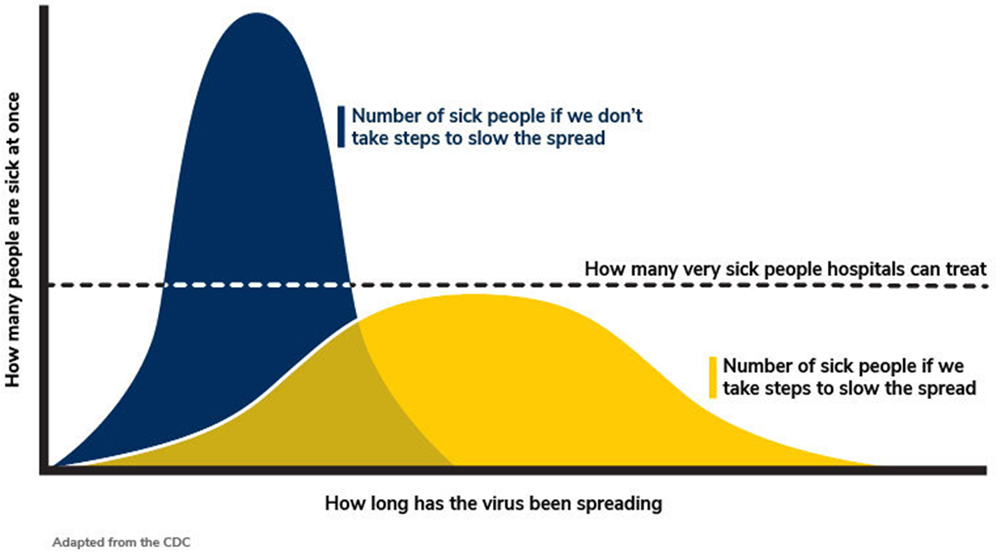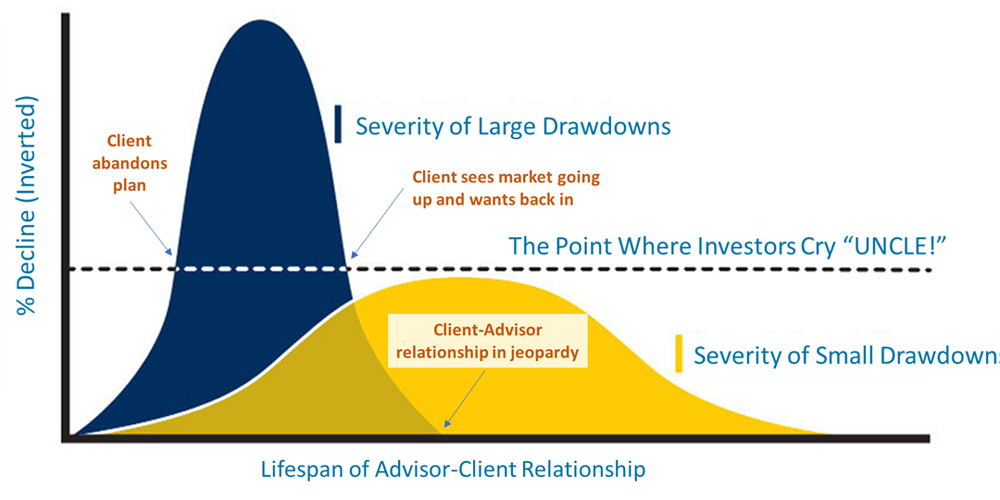Financial Advisors Can Flatten the Emotion Curve
What incredible times we are living through right now. About six weeks ago, here in the U.S. all seemed quiet and strong. Of course, there are always problems, but by comparison to today, things were positive. Boy, that seems like a long time ago.
Regardless of how this coronavirus pandemic plays out, a lesson we can already take from this is that…you just never know. No matter how good things seem and no matter how long the fun ride has lasted, it always comes to an end, and usually when we least expect it.
It’s similar to what Brian Flanagan says in the movie “Cocktail,” starring Tom Cruise, “Everything end badly, otherwise it wouldn’t end.”
New Phrases I Say Everyday for $1,000, Alex
Flatten the curve – a phrase that once was uttered only by data scientists, and perhaps by some in the medical field – has now become part of our everyday lexicon.
This is the idea that to minimize the damage of a virus, a population must enact restrictions, either voluntarily or by government intervention, that reduce the spread and thereby limit the number of cases to a level where the medical system can address each case effectively. A critical mass exists, which creates a point of maximum capacity for the system. Over time, the population builds resistance, develops vaccines, and increases its ability to handle future breakouts. The graph below illustrates this phenomenon.

The Investor Curve
While managing client assets through the Financial Crisis earlier this century, the Blueprint Investment Partners team witnessed an eerily similar curve relating to investment returns and client behavior. We knew we would see the phenomenon again at some point, but as of January we did not think it would come so soon. It is now rearing its head again amidst this crisis.
This next version of the curve relates to a drop in an investor’s account values and what happens when their investment and savings values reduce beyond the point at which they can emotionally stay committed the investment plan they developed prior to the crisis.

Once the drop becomes too severe, the investor will tend to abandon the plan and run to safety or look elsewhere for alternatives to ease the pain and anxiety of declining values. History has shown that at some point later, they will rue the decision; but in the irrationality of the moment, a biological “fight or flight” response takes hold.
De-risking a client’s portfolio can help, but leaves the investor or their advisor with the question of when it is safe to “re-risk” it.
Flattening the Investor Curve
Similar to the concept of containing the spread of a virus, if a financial advisor can flatten the curve for an investor and help the client stay below the point where they cry, “Uncle!” then the advisor can prolong the relationship and “treat the patient” enough to calm the anxiety and keep them on target for the long term.
Our data, and that of many others, suggests that mitigating risk while maintaining proper exposure to the market is the key to successful long-term investing.
Further, flattening the curve is also highly beneficial for the advisor. Assuming you are a fee-based advisory firm, then flattening the curve benefits the business, dampening volatility in overall AUM. This is a symbiotic relationship where goals for the advisor and client are aligned.
Easier Said Than Done
So, how do you do this?
We have written about this many times before and believe the components of managing client behavior begin with core elements of investment planning, such as suitability and investment horizon. Further, managing expectations around a client’s return goal based upon their financial plan is critical. Most importantly, advisors should employ strategies that reduce volatility and increase the client’s probability of achieving their goals.
With all strategies, diversification is a key tool. Managing cash and fixed income as a buffer to risk also is a long-utilized approach. But over the last decade, bonds have not offered the diversification needed to reach return goals, and a higher allocation to equities has been required.
Without a robust investment strategy, advisors are stuck between a rock and a hard place.
More than Suitability
We think a solution is for advisors to use a dynamic core strategy, or at minimum, a reliable tactical satellite position to offset the risks of an otherwise passive portfolio. Employing a systematic investing process allows the advisor to avoid watering down suitability for favorable market periods while also visibly de-risking the portfolio during periods of higher volatility. The goal is to address the known, but unpredictable and asymmetric impact of volatility on client behavior.
No one can plan for an exogenous event like a global pandemic, but having a good strategy in place before the event can reduce the damage and allow for much faster recovery.
Our ‘Why’
In a nutshell, times like these are why Blueprint Investment Partners exists. We have often said that the best strategy for something that has never happened before, or rarely happens, is one with a laser-focus on the one thing that drives a client’s account value: asset prices.
For more than 15 years, the managers behind our strategies have researched, built, and executed portfolios on this premise. We do not like to experience periods like this, but we are pleased that our portfolios stand out in the storm, and we appreciate advisors’ faith in our firm.

Brandon Langley
Let's Talk
If you’d like to learn more about how behavioral finance is foundational to Blueprint’s strategies and systematic investing process
